If you stand on the sea front in Barcelona you'll see a strange sight. In amongst the sun-kissed beach loafers walking up from the sands, the padres taking coffee in the cabanas, amongst the roller skaters skating and the cyclists cycling along the miles of traffic-free promenades you'll see a curious collection of people with clip boards studiously observing all that's going on around them. They'll be watching people come and go, observing life and counting cyclists, ticking boxes on their clip boards and filling in graphs, and they'll be doing all this with a little smile on their faces. Because Barcelona is the natural destination of the eager urban planning student, and come they do in droves to see the widely lauded and arguably most successful transformation of a modern city's fabric, and to experience for themselves what it's like when a city puts people at the centre of all it does.

The bright student will have read up on their history and know that this urban renaissance didn't happen overnight from out of the blue. Years of local cultural oppression under the Spanish dictator Franco finally gave way in the late 1970s to a locally elected Mayor, local Government and a degree of autonomy. From academic and cultural circles to the very word on the street there was a re-flowering of Catalan culture and language keen to reassert its own authority. Slowly and in a steady, measured way the city was led through a transformation - first by socialist Mayor Pasqual Maragall from 1982 to 1997 and continued by later city authorities – starting with small urban squares and places and leading right up to the total reclamation of the Barcelona beach front which was previously the haunt of derelict heavy industry. Buoyed with enthusiasm and their new found vitesse the people of Barcelona bid for, won and staged the successful 1992 Olympic Games, using them as a further opportunity to turn great swathes of the city in to new and beautiful people-led places. But the story doesn't end with the '92 Games. The city has continued with its projects – from re-styling small town squares to re-designing entire districts – and though slowed by the global financial crisis and the perilous state of the Spanish economy, Barcelona remains bullishly focused on putting planning at the centre of bringing about long-term change.
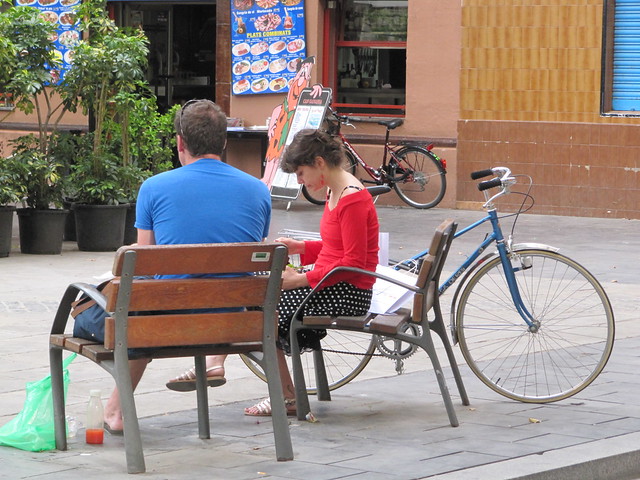
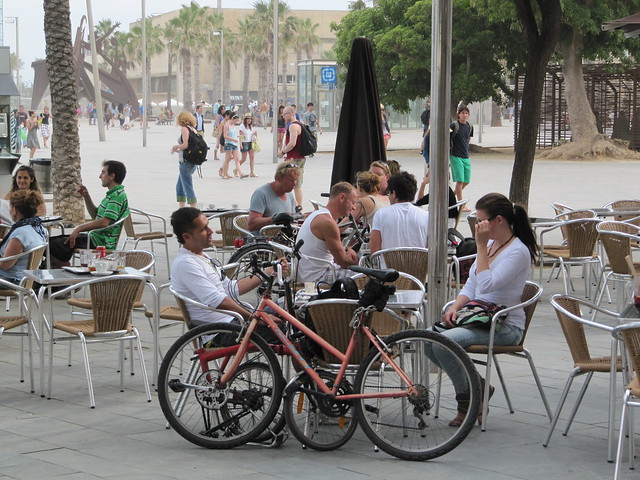
It hasn't all been smooth sailing for this suddenly sea side city, however. The Forum 2004 Project pocketed so much public money that it brought the Catalan people on to the streets in unified despair. The city got a brand new conference centre, exhibition grounds, clutch of business hotels and a new shopping centre (and a leaking, eternally unfinished Herzog and De Meuron cultural centre) but the vast swathes of public cash that this project swallowed up unchecked represented the worst of the speculative greed that has subsequently come to define that pre-financial crisis era. And in the city's new business and residential district stretching along Diagonal Mar too much attention has been lavished on procuring starchitect-designed new office buildings that have landed incongruously at the expense of the fine street level grading the city is renowned for.
But the path to true love never ran smooth and generally Barcelona has come to be regarded as a success and the poster girl for urban re-design. Today hundreds of thousands of tourists flock to the city and its surrounding regions every year to enjoy what is regarded as a charming place in which it is nice to spend time, whereas before 1992 many foreigners would have struggled to tell you where Spain's second city even was. With re-paved public squares, brand new beaches and promenades and a host of new parks, Barcelona has put people first. And hand in hand with this has gone their long term plan in how to move people around; long gone is the busy main road which used to scar the sea front, banished to an underground culvert and tunnel instead. Deeper below ground still is a comprehensive – and comprehensively air conditioned – metro system with step-free access to all platforms on the network (of course bikes are welcome!). Up at city level a new tram network is being steadily expanded, and for those on foot or bike an extensive 30kmph zone has been implemented, with road narrowing on smaller lanes to help control traffic speeds. Where there are larger busier boulevards a tree planting programme has helped to soften the impact of walls of traffic, and extensive separated bicycle lanes have been put down to help keep people on bikes safe and comfortable. The municipal bike share scheme Bicing sports 4,000 bikes across 400 stations, and best of all is open only for use by local residents which means they are always able to find a bike or a dock at the tourist hot spots. It's credited with acting as a "super-charger" for re-rehabilitating the bicycle in BCN.
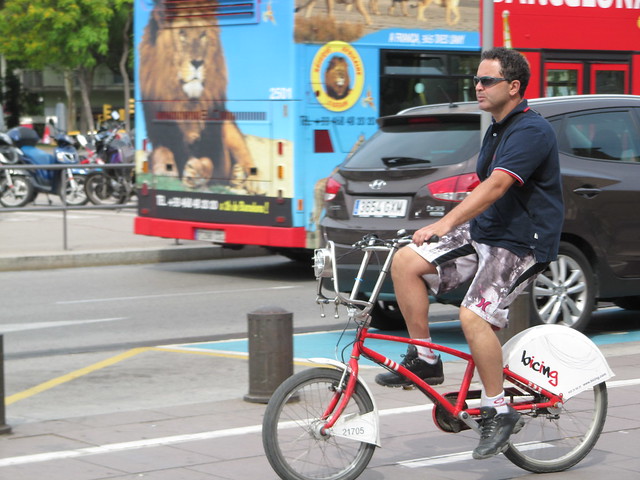
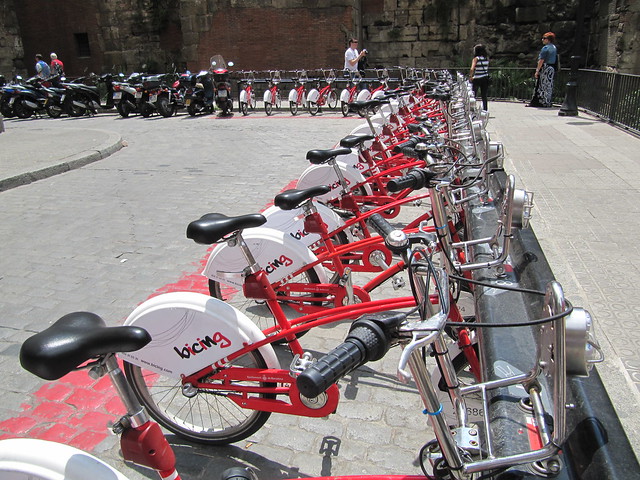
Cycling in the medieval quarter, or Barri Gotic, is hard work. Here's a place where the bicycle isn't really welcome and where you have to really keep your wits about you. Not because you might get taken out by thundering buses and blind lorries, and not because you might need to traverse three or four lanes of fast moving traffic but because the streets are tightly twisting, narrow and packed full of people – just as they have been for thousands of years. Dangerous, noisy and dirty garbage trucks need not enter the densely populated city centre because refuse is whisked away by a pneumatic rubbish disposal system - I quickly became fixed on finding reasons to take the rubbish out just so that I could drop it in to the chutes and listen to the woosh as it was pumped away. It's the accumulation of seemingly minor interventions like this that help to create safe, inviting and enjoyable streets.
It was here on the Barri Gotic's streets that I witnessed something extraordinary. A taxi driver (perhaps he was late, perhaps he was frustrated with his poor choice of transport) was crawling down a narrow laneway packed with people. He tooted his horn in exasperation in a "Get out the way, I want to go faster!" fashion – something that must happen in every city around the world every day. Two elderly ladies who were the focus of his attention and walking in the "road" turned, looked at him, shook their heads and giggled and then carried on their way without moving to one side. Here, at least, people really do rule the roads.

Separated bike lanes, divided from the traffic by a raised rubber buffer, took us all the way from the sea front to architect Antoni Gaudi's unfinished masterpiece the Sagrada Familia cathedral. The area was packed with taxis, tourist coaches and local buses as well as lorries making deliveries to the multitude of restaurants set up in the area to cater to visitors. We didn't once have to mix with the roaring traffic and were able to cycle around 3 sides of the cathedral from the safety of the bike lanes. What a wonderful way to experience what is easily Barcelona's most popular tourist attraction and where there are genuinely competing demands for space. I thought sadly about the hideous traffic island that ostracises the Houses of Parliament and Westminster Abbey in London from the rest of the city and what a horrible place it is to spend any time due to the roaring, belching un-checked traffic. How different things could be, if only we would try.



The speed at which change can take place in Barcelona really struck me too; since my last visit just a few years ago the city has continued apace with expanding its network of separated bike lanes, in places taking space away from some of the busiest roads in the city. The network isn't perfect by Copenhagen or Amsterdam standards and relies too much on bi-directional bike paths but what it lacks for in design finesse is more than made up for by the enthusiastic reception of the city's cyclists. Whether commuting the morning crush by bike or riding out to see friends for drinks at 1AM on a Saturday morning – no matter the time of day – the bike lanes are always busy. And the cycle culture is a healthy mix of serious sports cyclists, Mums on bikes, bright young things on clapped out old beach cruisers and everyone everyday and ordinary in between – just as it should be. No one group of cyclists seems to dominate and the city drivers seem increasingly used to sharing space with people on bikes. Jordi, a taxi driver, remarked to me "Here it's easier to get along with bikes – give them plenty of room and we both have an easy time of things. Who wants to get in to a scrape for the fun of it? When the city first painted bike lanes over intersections everyone thought it would be carnage. But you go about your business carefully and you get used to it." Indeed, Jordi seemed much less concerned with successfully sharing the road with cyclists than he was with the success of the Bicing system which he thought was taking away his customers. In summer the bike lanes are packed with tourists and the bike hire shops are booming (sustained, of course, by the inaccessibility of the Bicing scheme to the casual visitor).
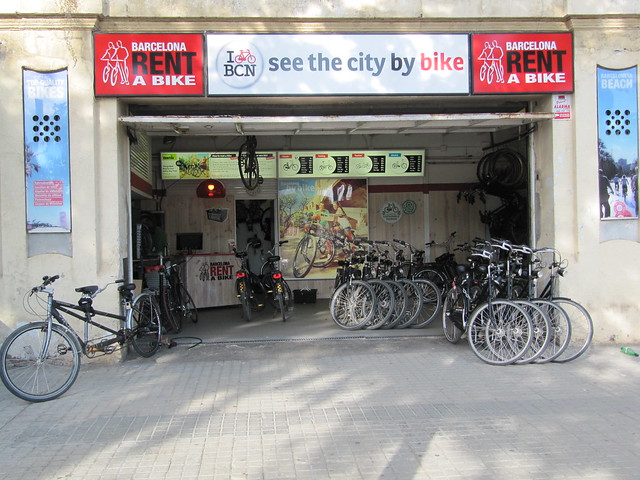
Locals might grumble about the suddenly slow-moving bike traffic, but what a lovely problem to encounter. Generally, if tourists and overseas visitors – many of whom might not have ridden a bicycle for years – think it is safe enough to strike out on two wheels then you must be doing something right. Mikael Colville-Andersen of Copenhagenize fame is a big fan, and he has a pretty good yard stick with which to check BCN measures up.
To ride a bike from Barceloneta, past Port Vell, Port Forum and out as far as the "Chernobyl Beach" power station is to see urban planning in place. Tourists and city dwellers alike flock to the sea front (though only the tourists go in the sea – locals know better!) If you get caught short you'll visit a pubic convenience cleaned by a gentleman who goes from toilet to toilet on a city-supplied tricycle with a specially adapted basket for carrying all his cleaning equipment and chemicals – in a predominantly people-led place it's just the most sensible way of getting around. After a morning in the sun people retire to the shade of the dense warren of medieval streets behind, or head along the separated bike lanes further in to town to the shopping district or the University. If you're very lucky one of the city squares – large or small – might be filled with a festival. We happened upon a Catalan cultural fiesta with local kids performing regional dances to traditional local music. The old folk (who still live in the city centre instead of being shipped out to God's waiting room in the suburbs) stood on their balconies and came out in to the square to watch. Families came down to meet their neighbours and let the younger kids tear around for a bit. After the dancing children were done the old folk (those who can remember a time when to dance the local dance was to stare down the barrel of an institutional gun) hopped in to a circle with a glint in their eyes to show the young ones how it is really done.
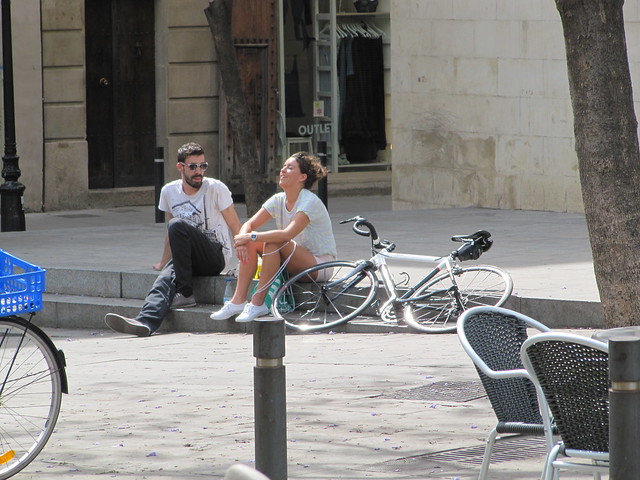
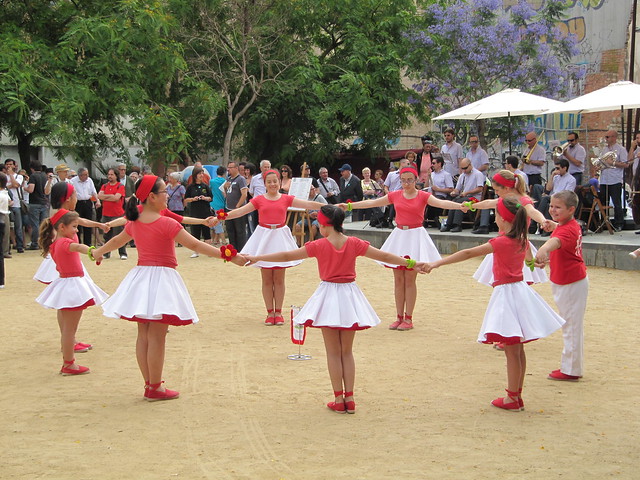

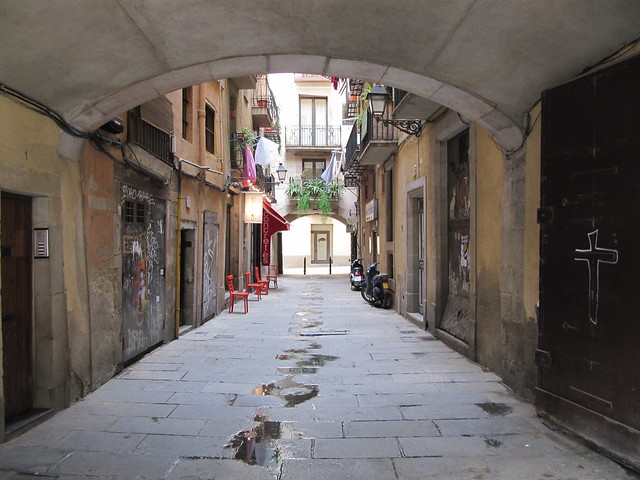
Come Monday morning they'll all be heading back to work on foot, by bike or on the subway or the tram – driving in central Barcelona makes no sense at all – and a new gaggle of urban planning students will arrive armed with their clipboards to see how it all works. If people are coming from all around the world to observe and write about how your city and your neighbourhood functions you know you must be doing something right. Ride on, Barcelona, and keep up the great work.
For my observations on cycling in other cities, see the following links: Bristol, England; Copenhagen, Denmark; Nice, France, and Paris, France.
Share |
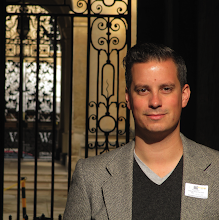




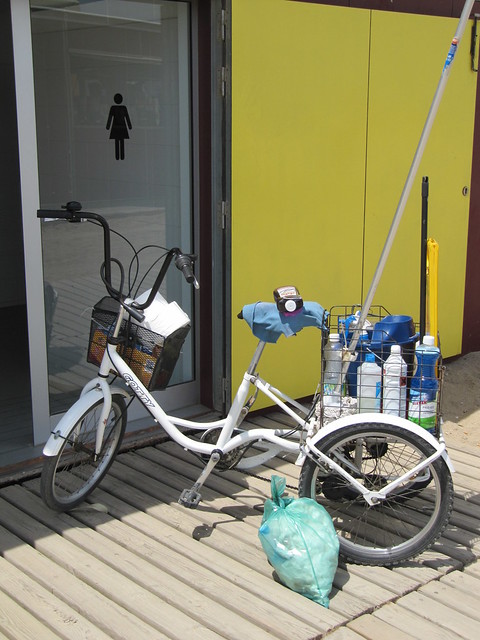
6 comments:
Another good read. I am just back form Barce and the beach front is immense. My last time there was 6 years ago and it's my guess that cycling has exploded in that time, i'd be interested in the stats.
I plan to return and do a short bike holiday around Barce with my family.
Adios AW
Top stuff! Yes, Barca's transformation has been remarkable, and shows what political will can do - Madrid, whose streets are currently something of a bike desert, should be watching and learning.
What AW has just said tells you everything you need to know about the success of regeneration schemes like this; "Im going to do a bike holiday around Barce with my family." That's planning and regeneration translating into £££££ right there.
@Rob I must admit, I didnt go to Madrin with my 'bike eyes' on when I was there 6 or 7 years ago but I did note that it was very very hot there!
Biking in Barcelona? That is one heck of an exciting cycling experience! Thank you for sharing such a worthwhile read!
Your Article Is too much Helpful. And I Find out a lot of information from your posts.Thanks for sharing your great post.
By the way, if you are looking for Gear cycle in INdia, do check out our page for more insights on
hercules gear cycles below 5000
Really helpful article for in todays in youth heads!Great Information…
Post a Comment